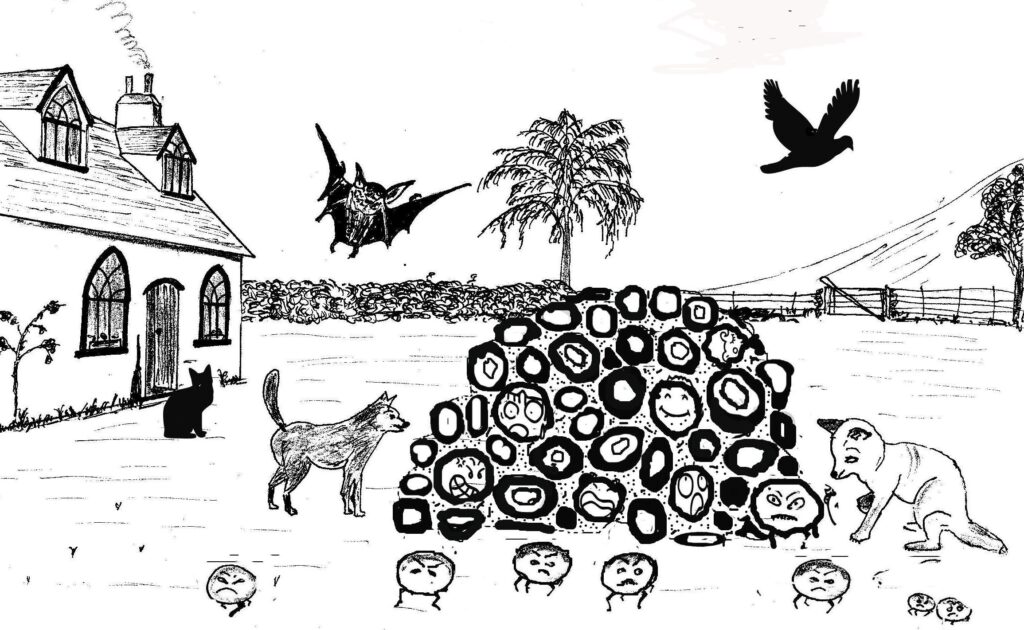Puddingstone myths & legends

Breeding Stone (or Mother Stone)
Villagers believed that breeding stones collected pebbles or fruit or children. There was a vague belief that the stones were alive, could move and had human feelings.
“I remember being taken by a man of the upper labouring class to see a well-known breeding stone. It was larger than a man’s head with a cup-shaped cavity the size of a small orange in which lay a pebble as big as an acorn. I was told that this pebble continually grew larger, and that if it were removed the breeding stone would begin to breed another. It was evident that the man firmly believed what he told me and he got quite angry when I ventured to cast a doubt upon the story” (Isaac Taylor – Essex Review 1895).
Growing stone
Puddingstones exposed in fields by ploughing and erosion or frosts seem to appear from nowhere. This caused a superstition among farmers that the stones grew in their fields and would damage crops and ploughshares or block streams. Many fine examples were destroyed to prevent further growth.


Hag Stones
Puddingstones known as ‘hag stones’ or ‘witch stones’ were carried in pockets or placed on doorsteps as they were believed to ward off evil. A parish record of 1662 shows how a witch was to be prevented from escaping from her grave “that a hag stone be placed on the coffin for her bodie within be bewitched”.

Folklore and tradition are remembered on May Day when Standon Morris dance in the dawn round the puddingstone. Morris dancing is now a hobby and social activity but has its roots in the return of Spring, to encourage crop fertility. (The plaque is wrong about glacial origin, see ‘Puddingstone Formation’ page).
Pagan idols and myths.
Puddingstones are often found built into or near churches as they were objects of pagan worship. In AD 601 Pope Gregory decreed pagan idols and myths should be sanctified by incorporating them into the fabric of the church.
Much of the information on this page is from an article on Hertfordshire Puddingstone by David Curry © St Albans Museum.
EHGC are grateful to the museum for permission to quote from this.
